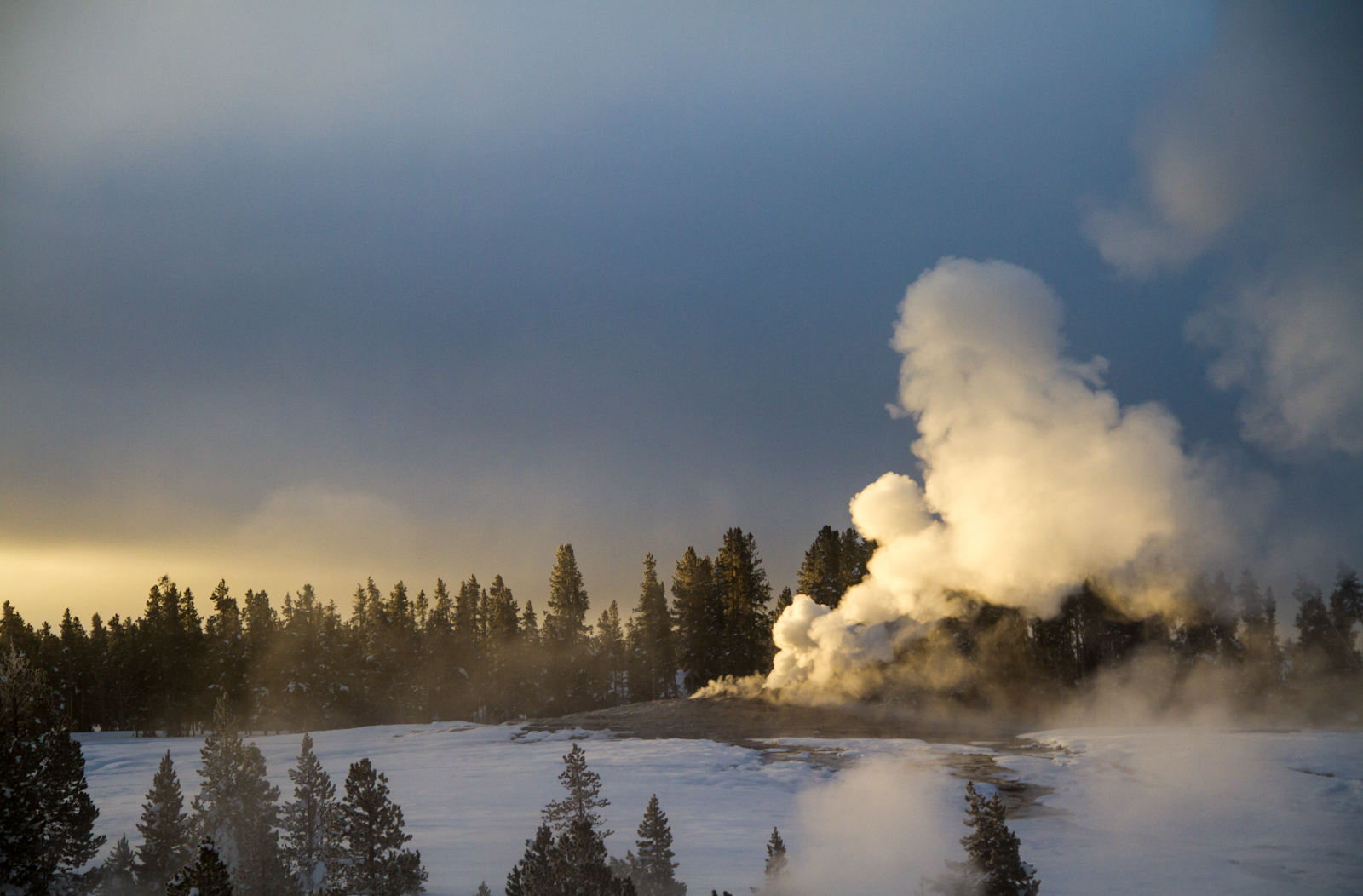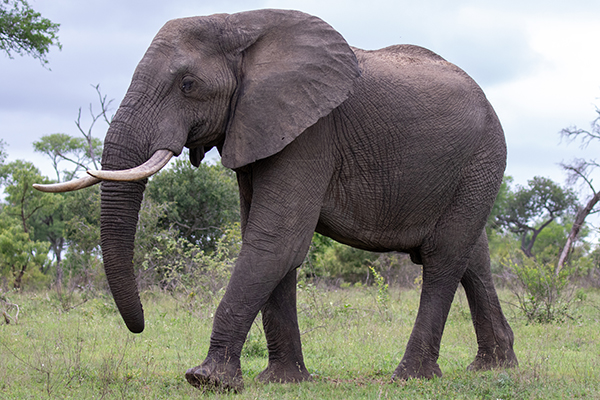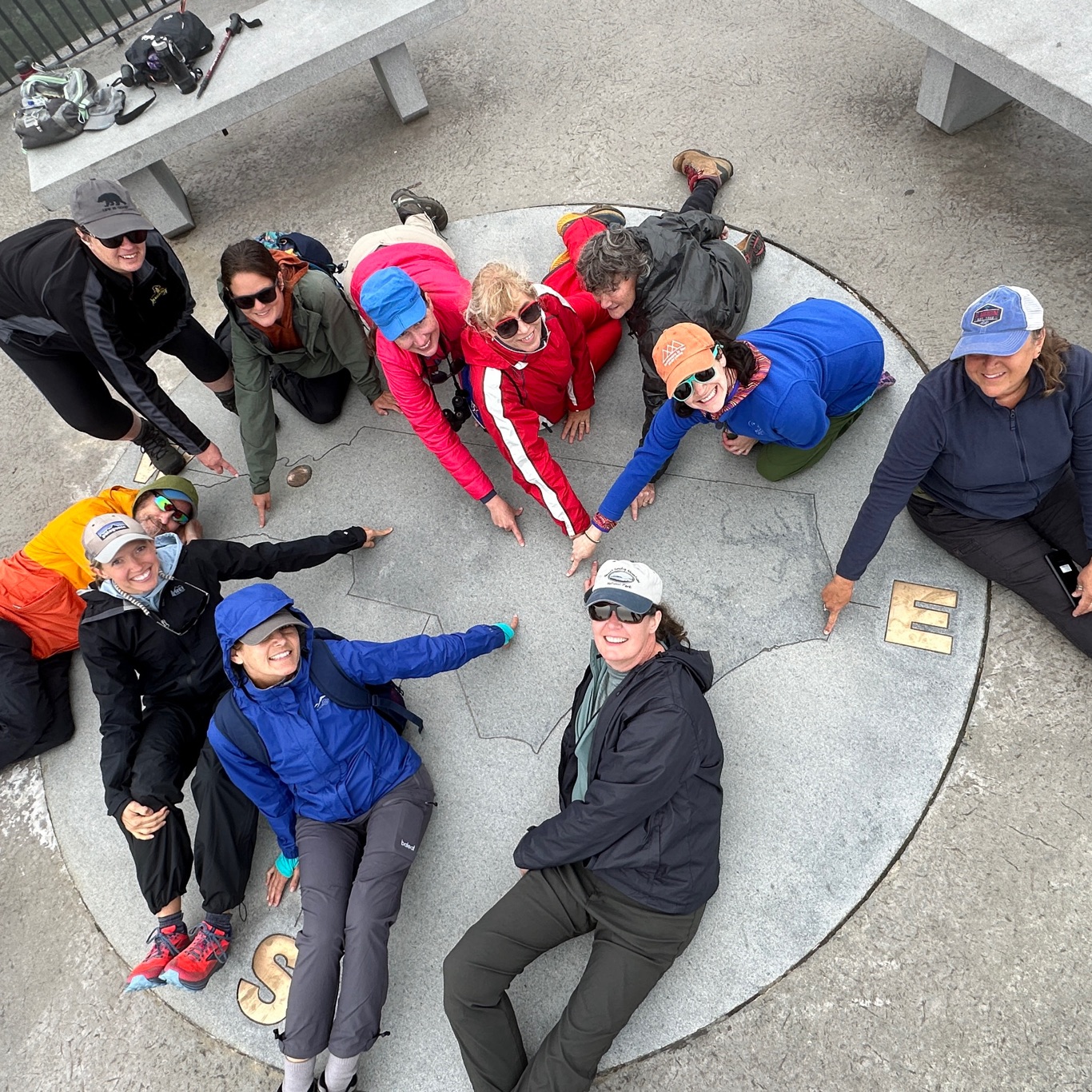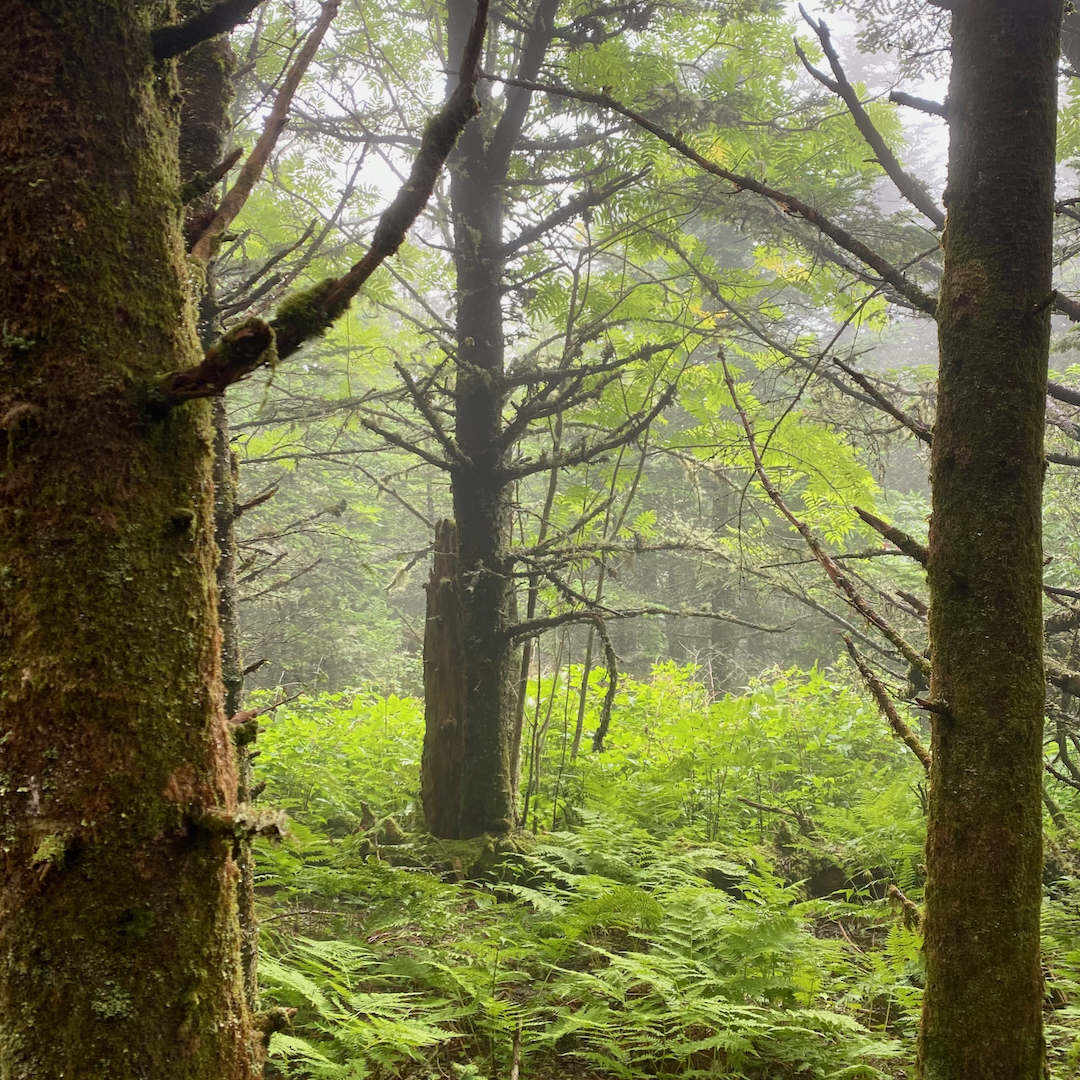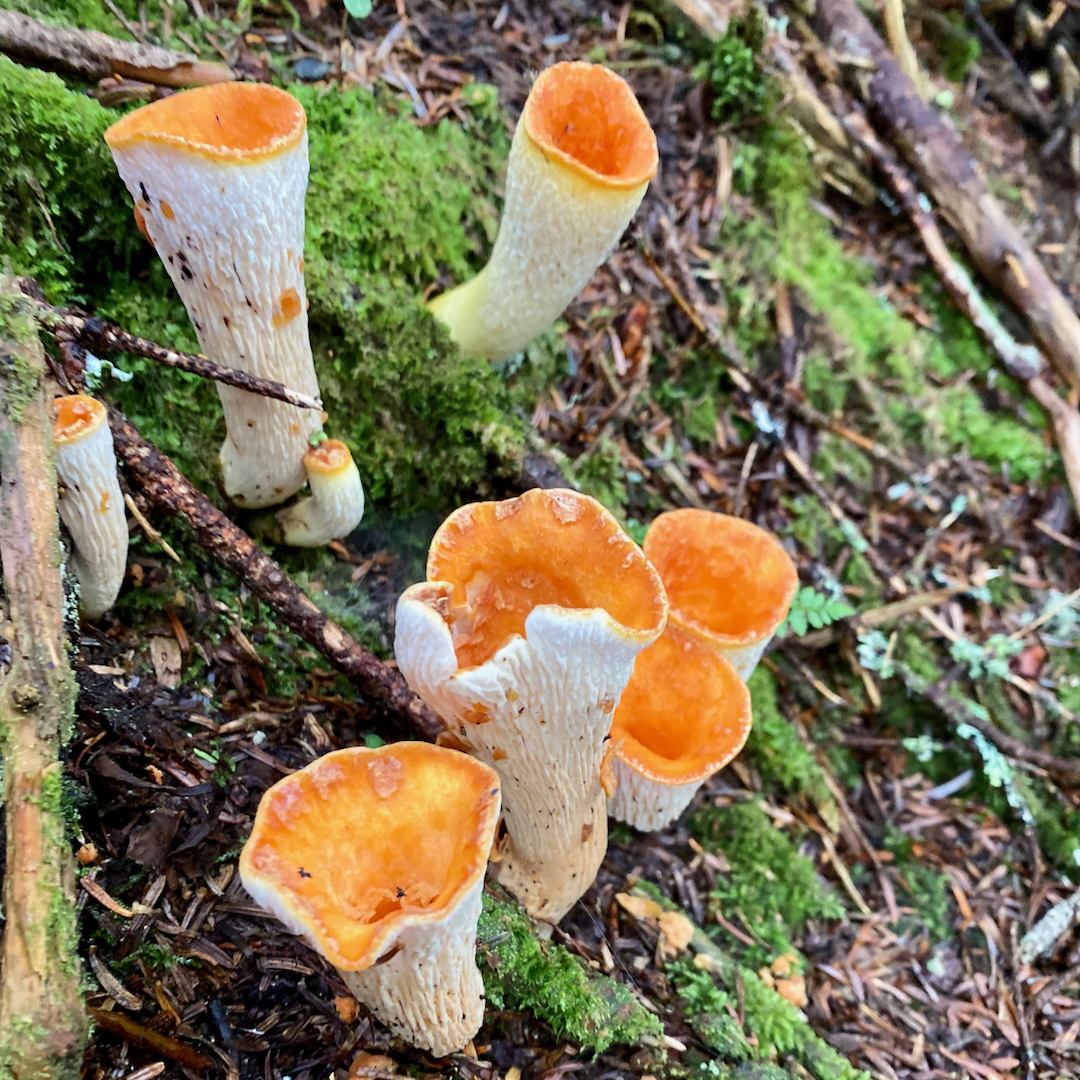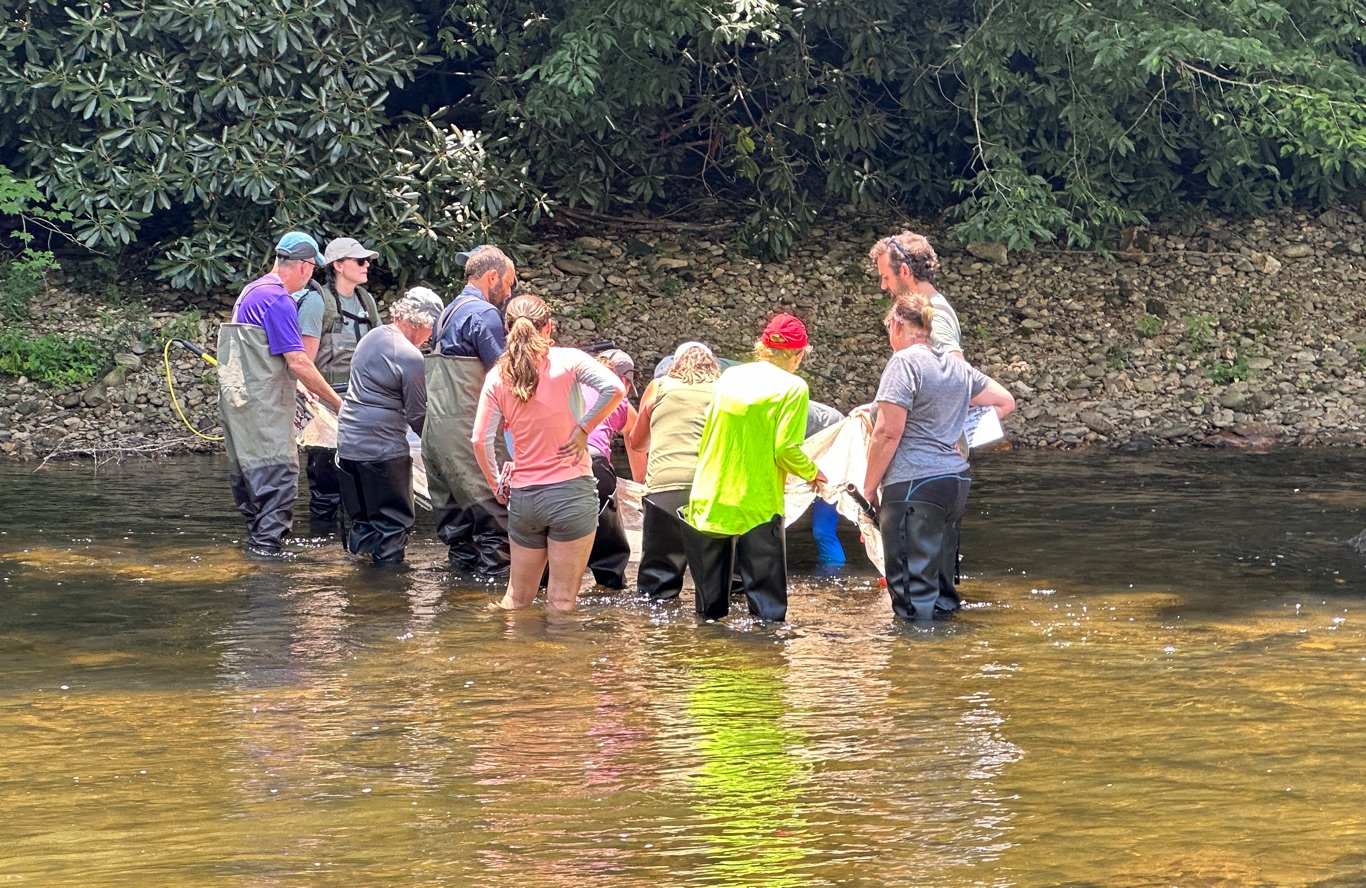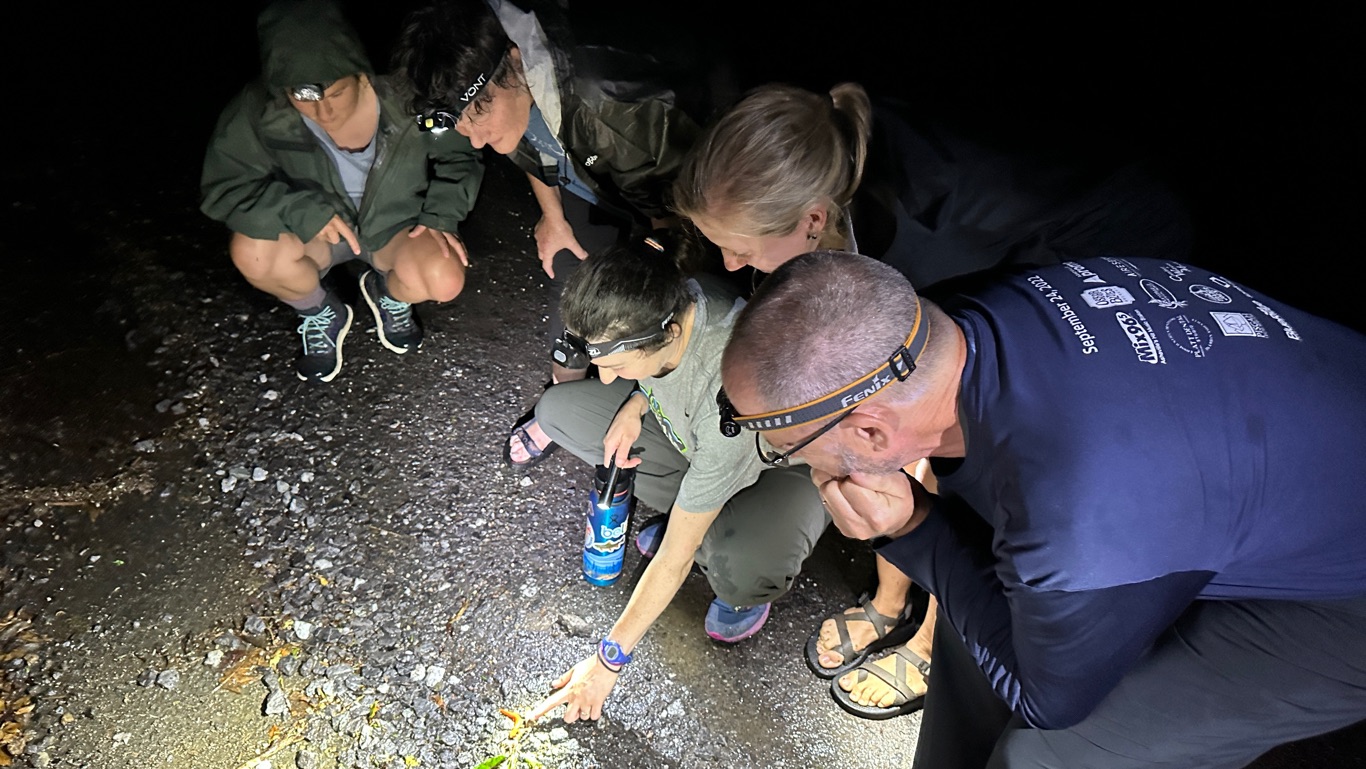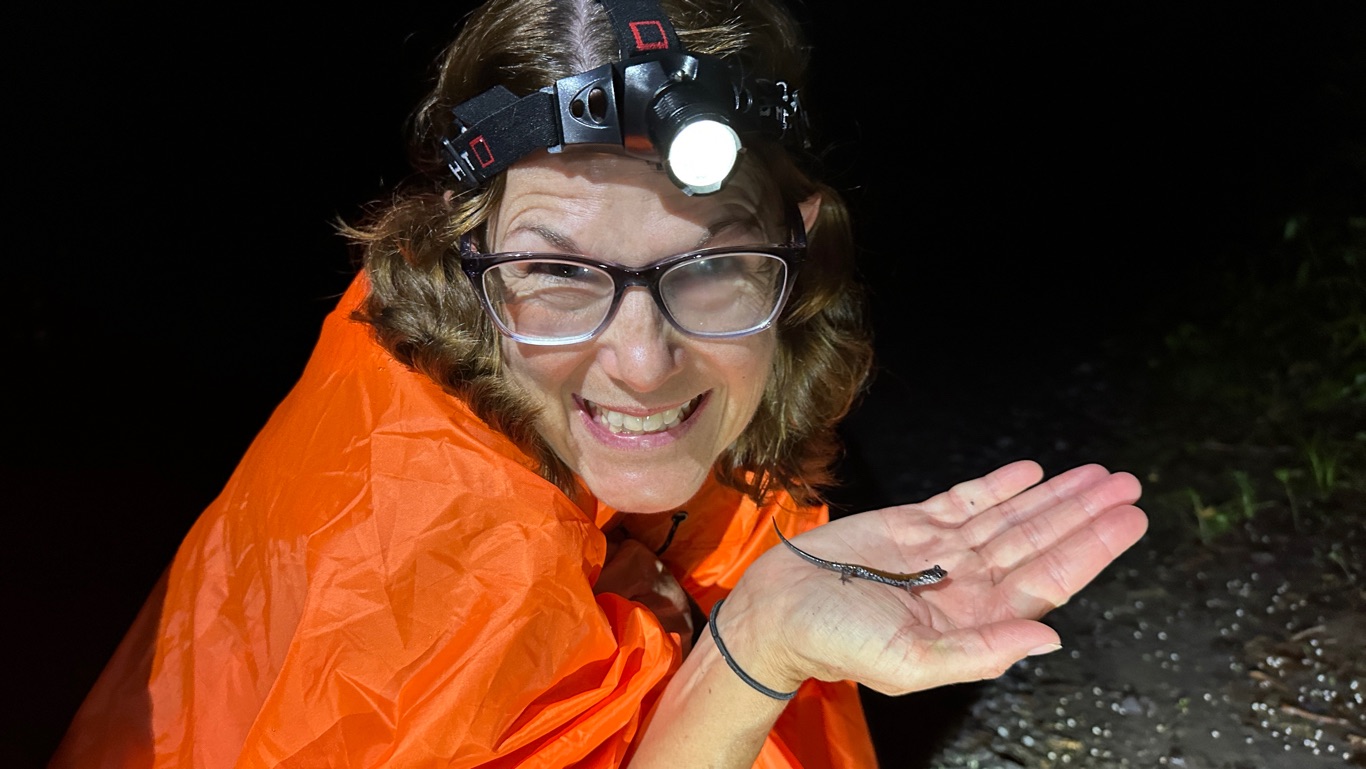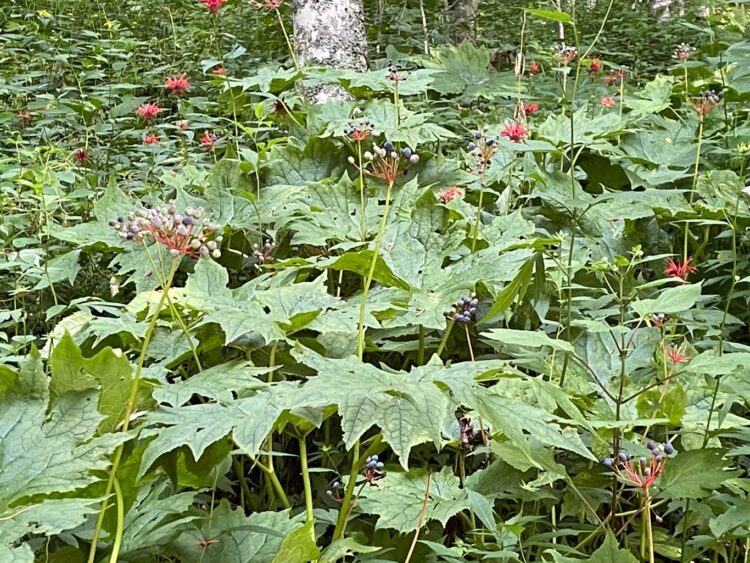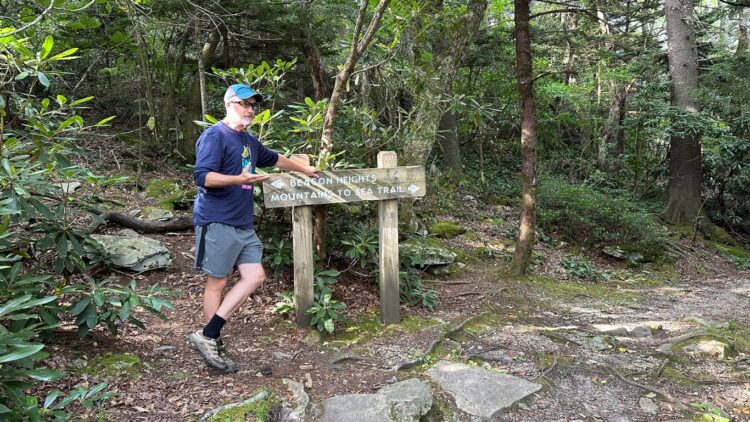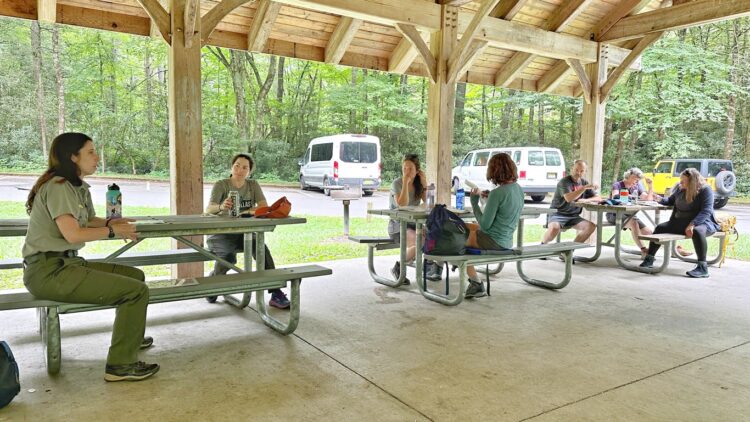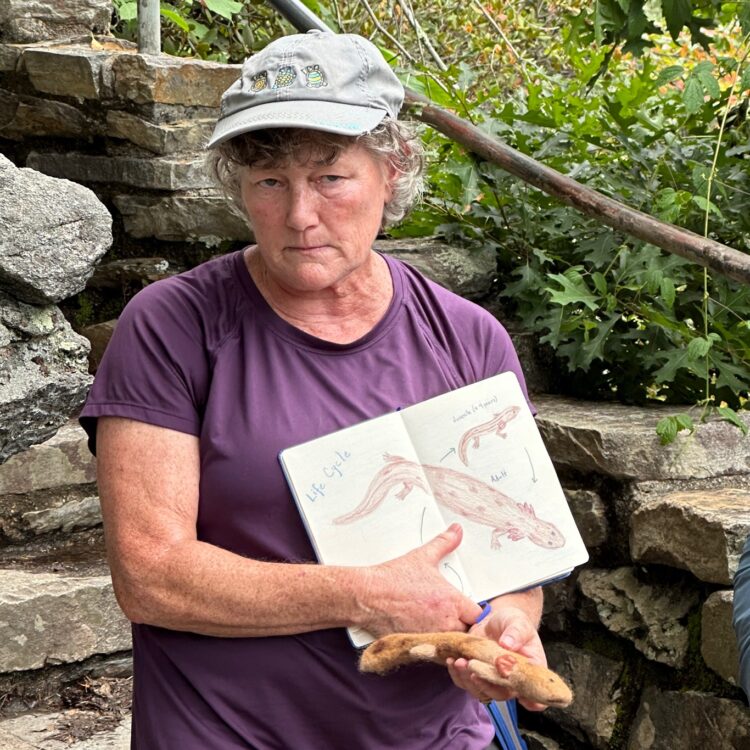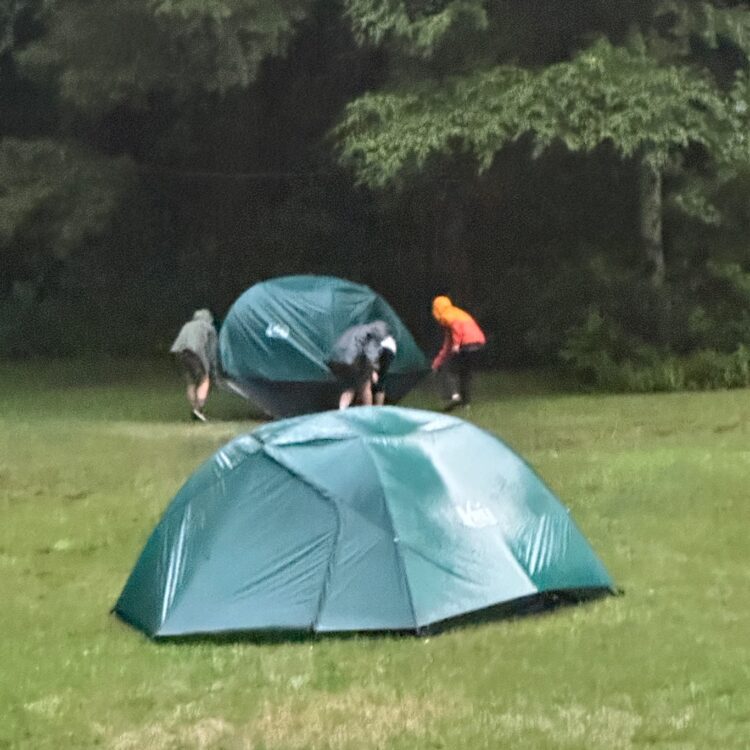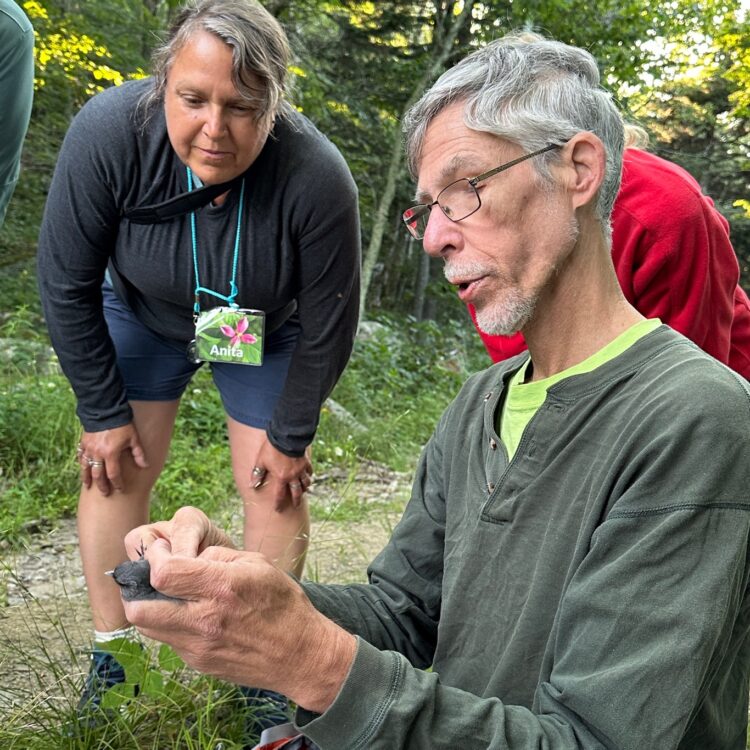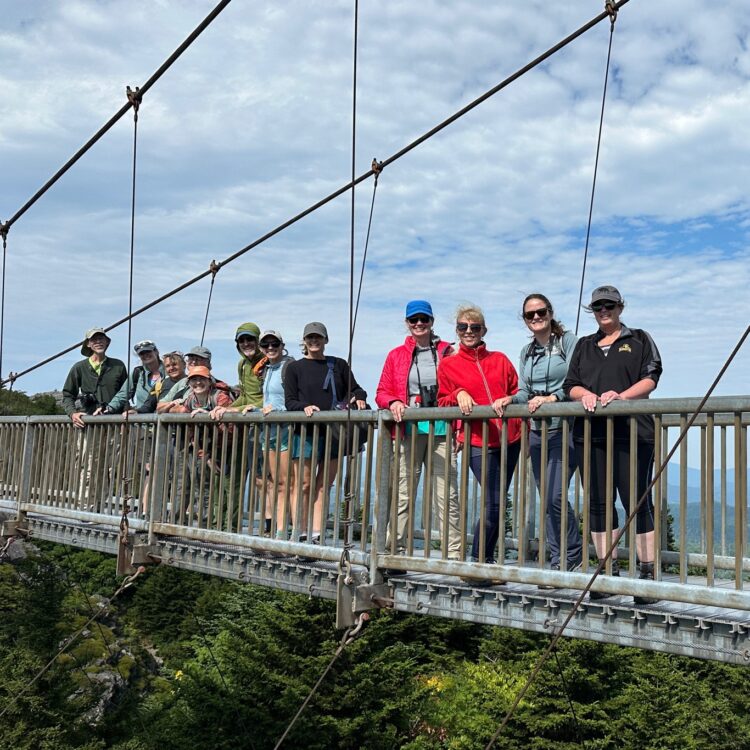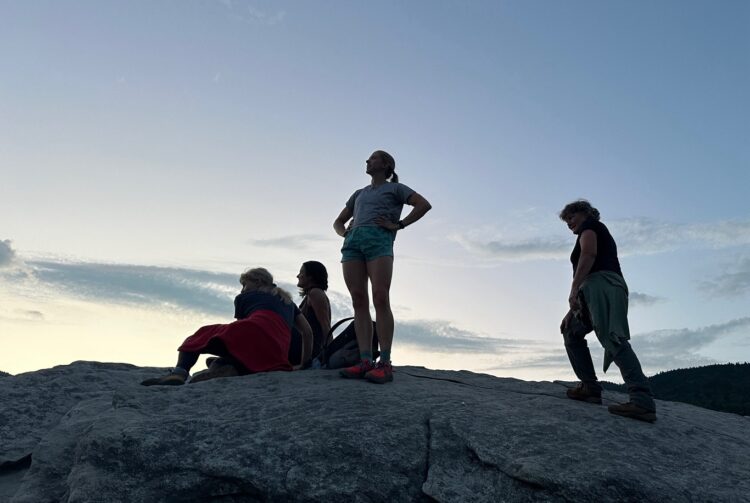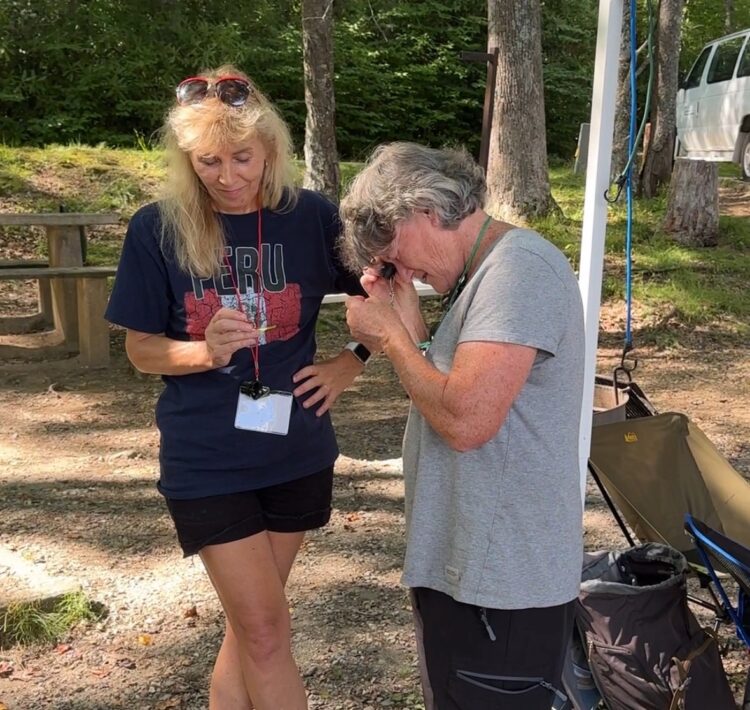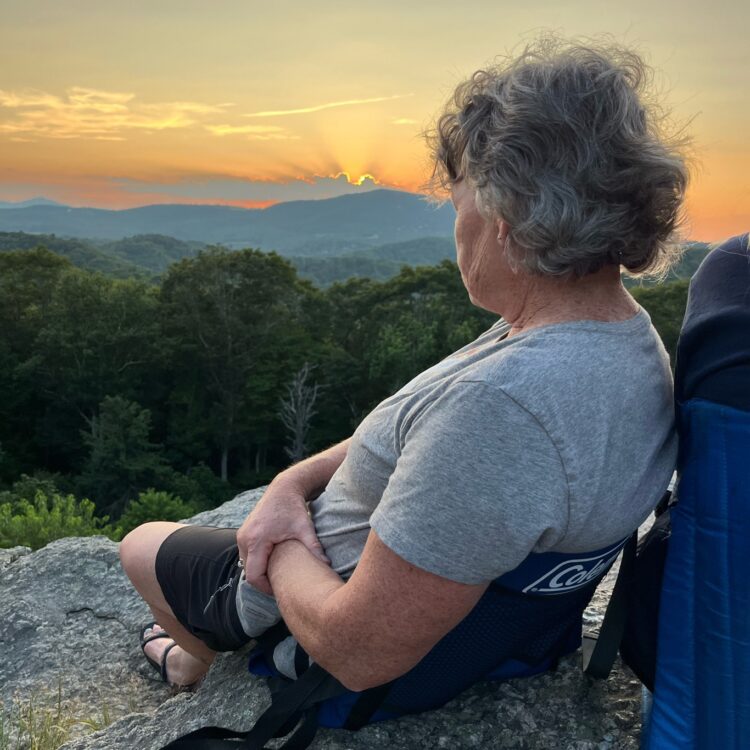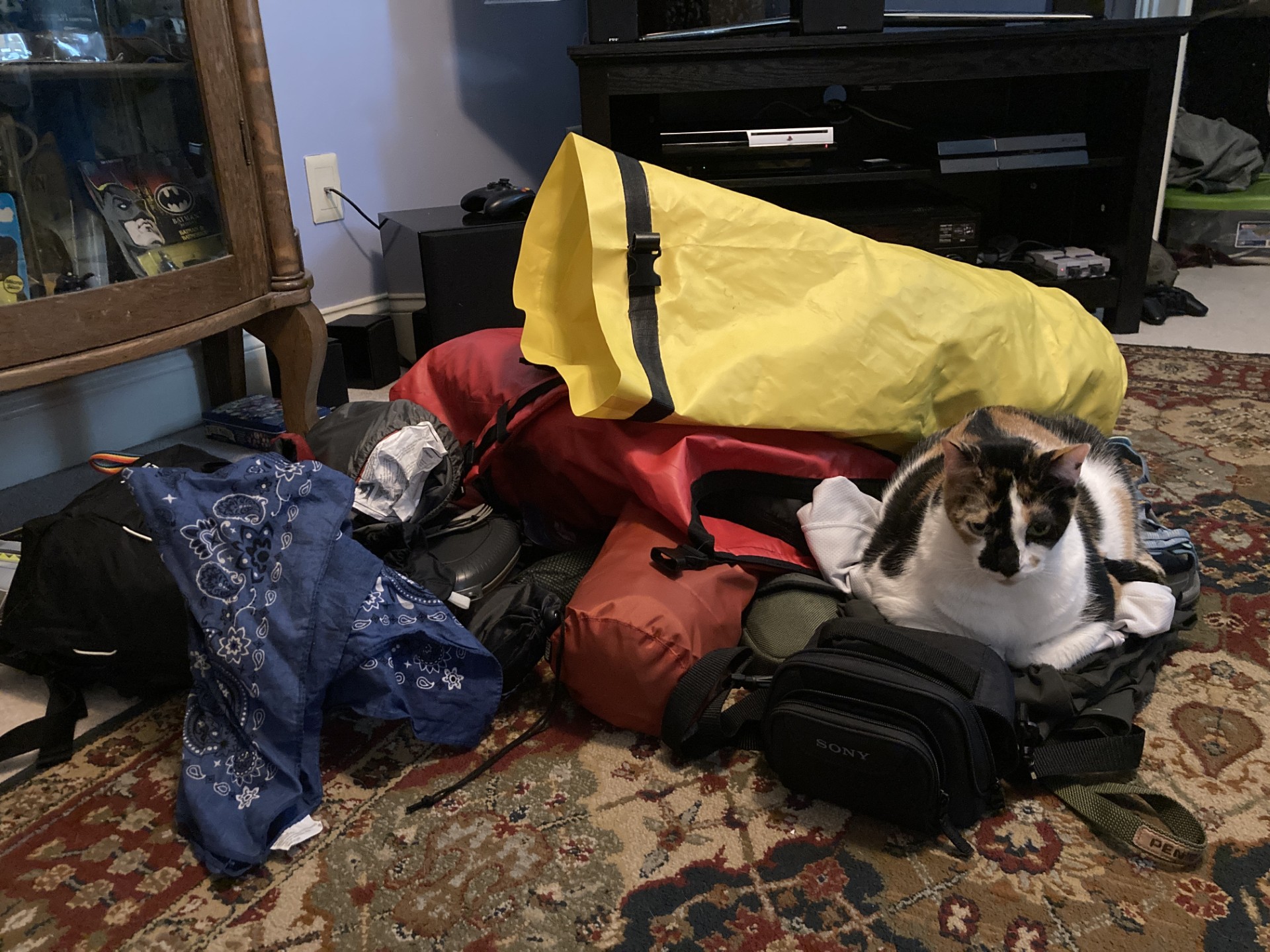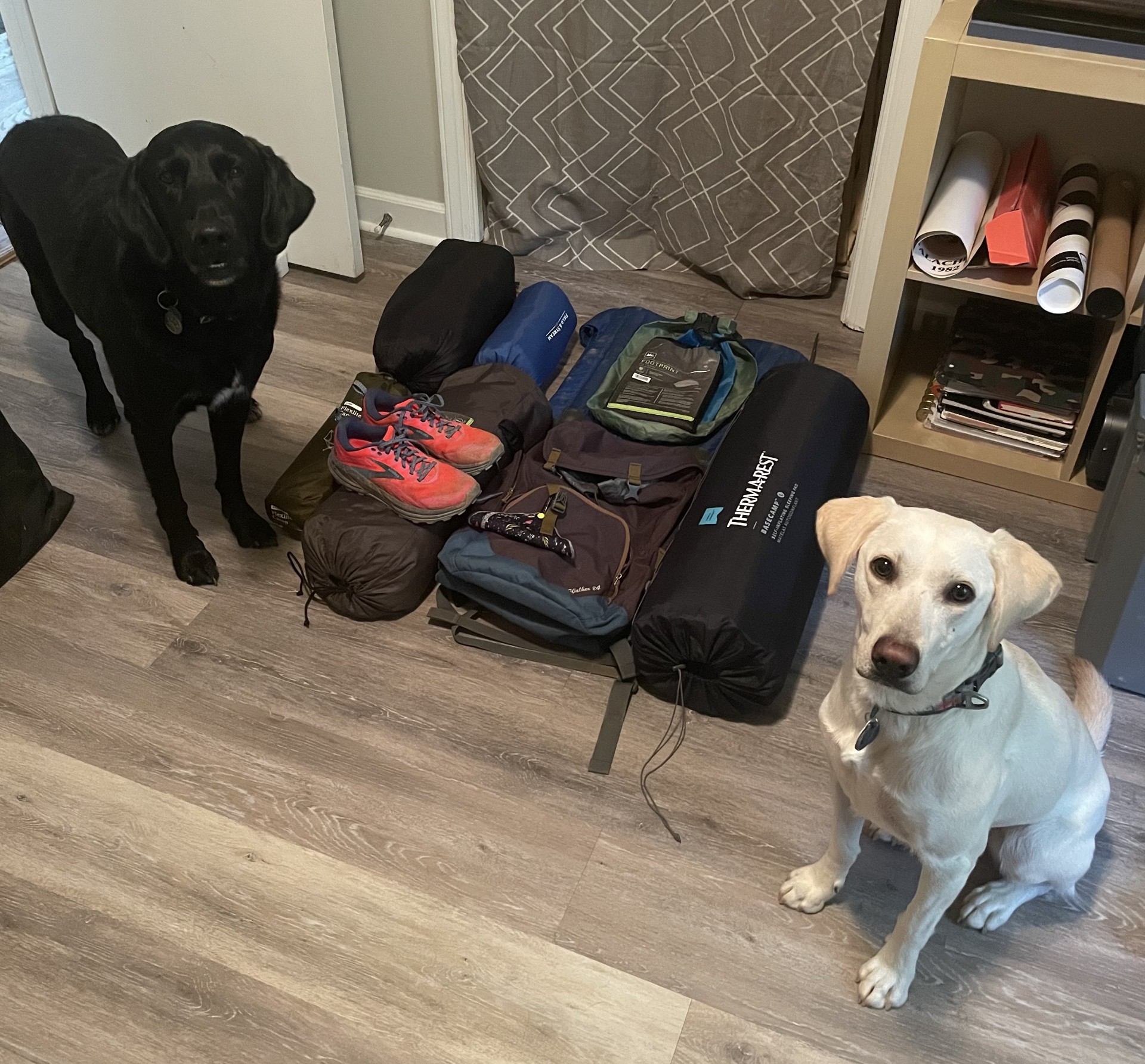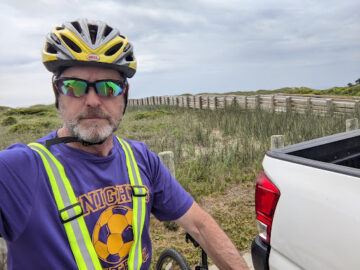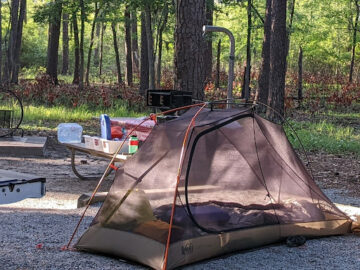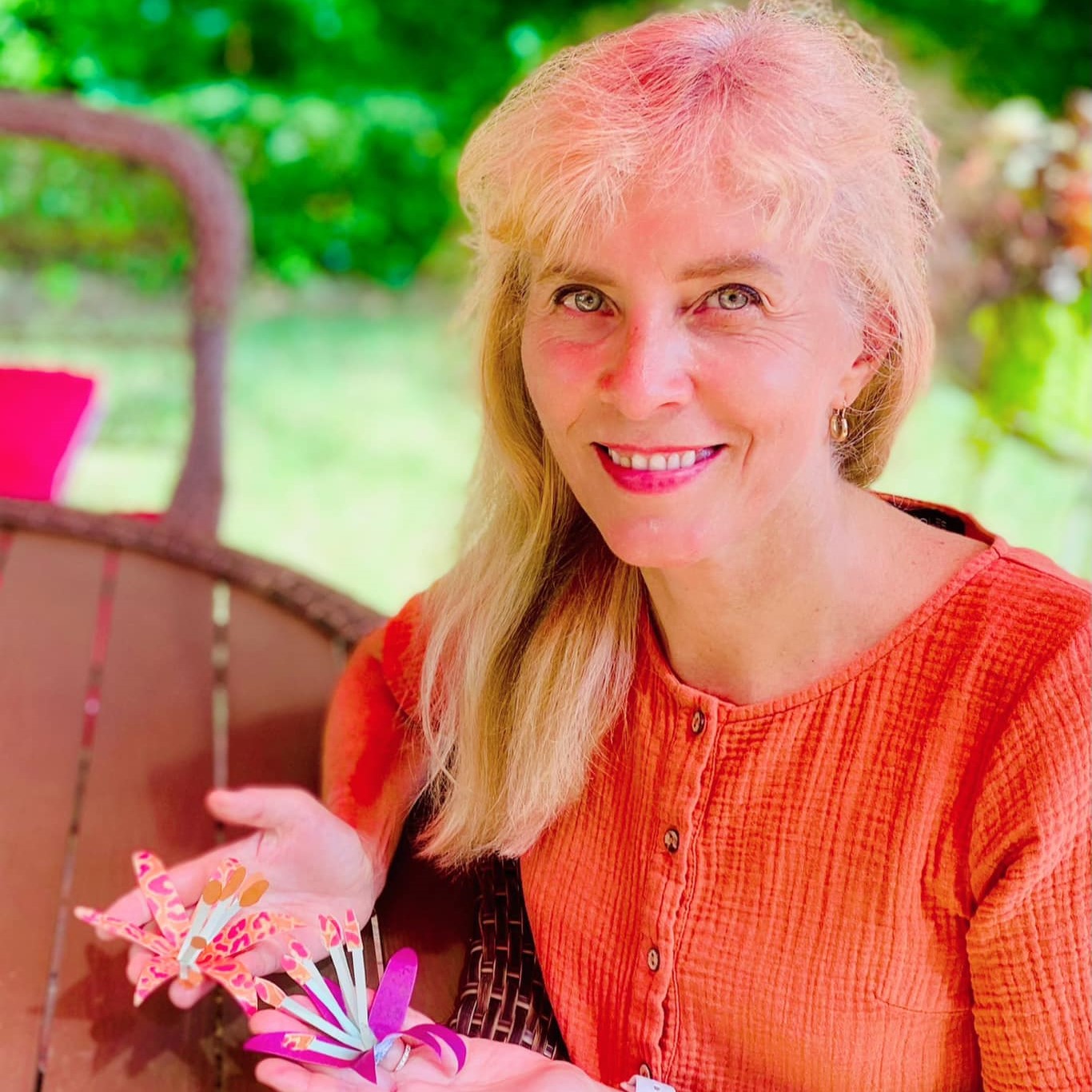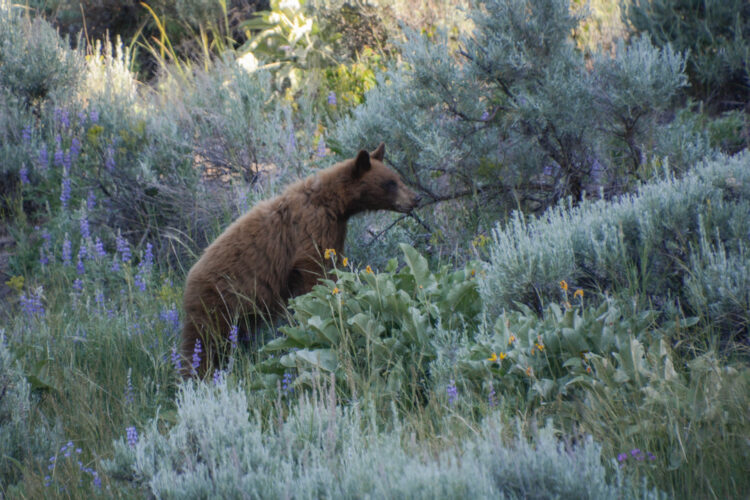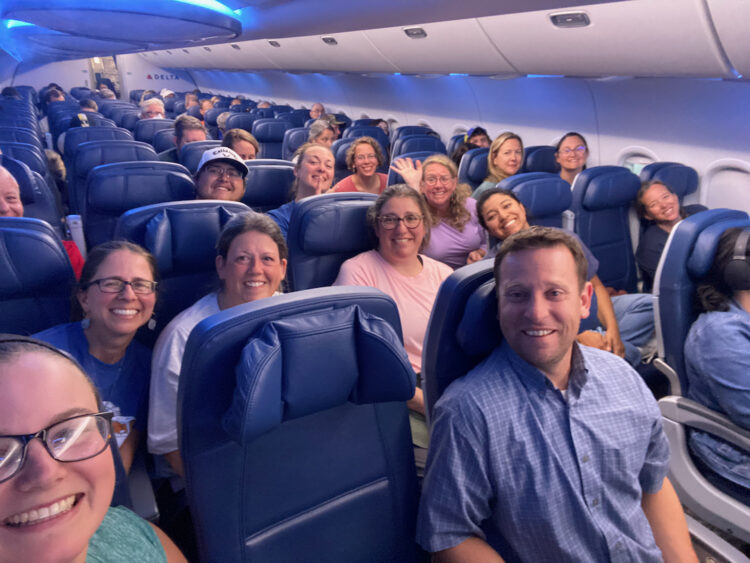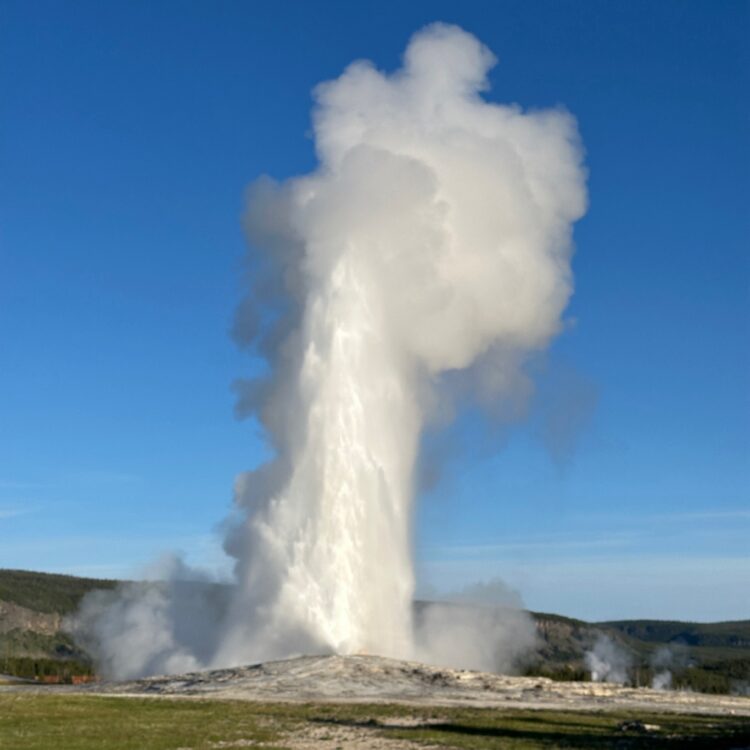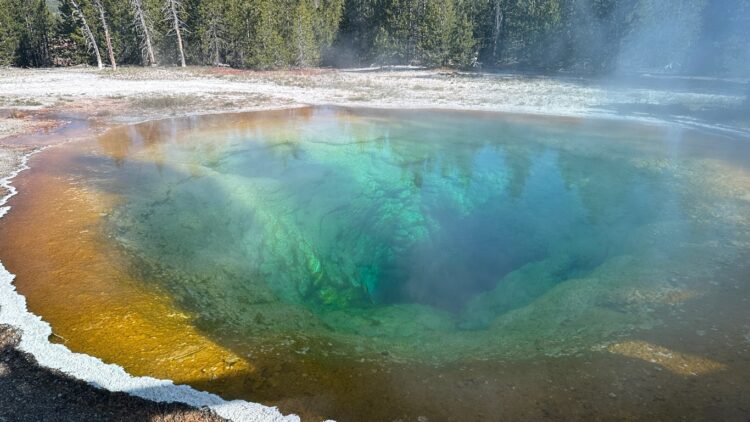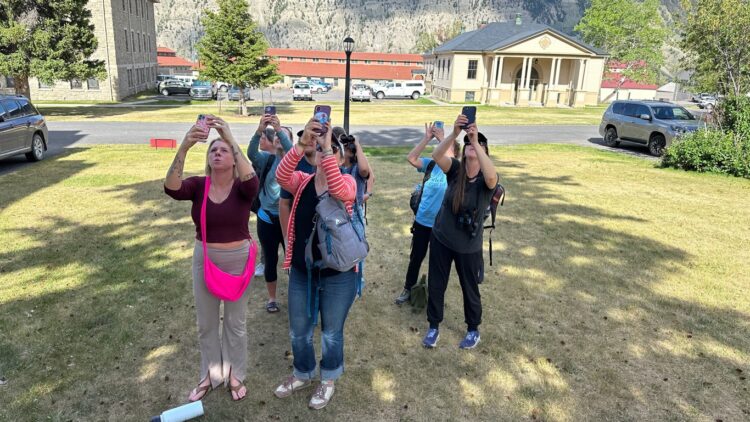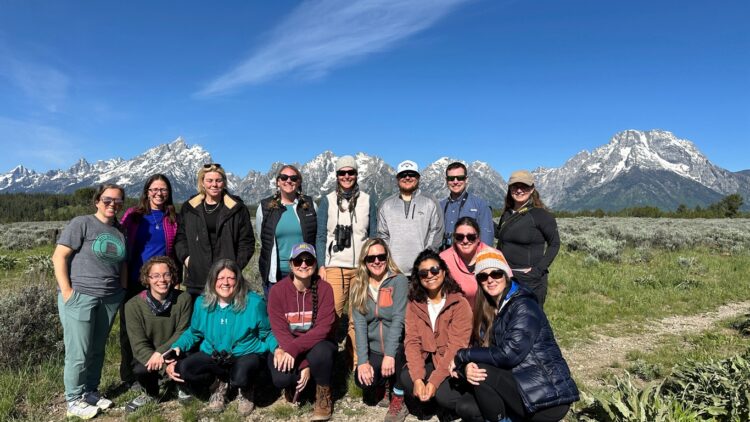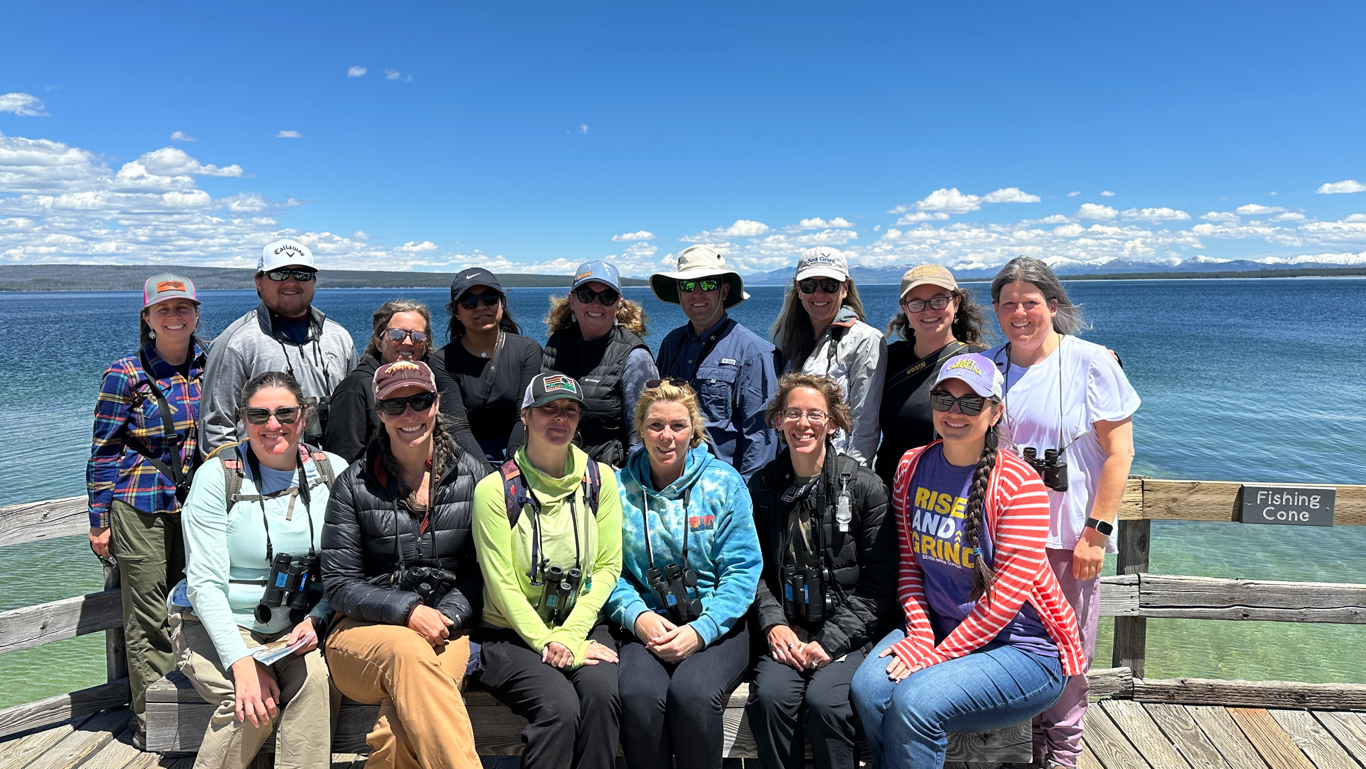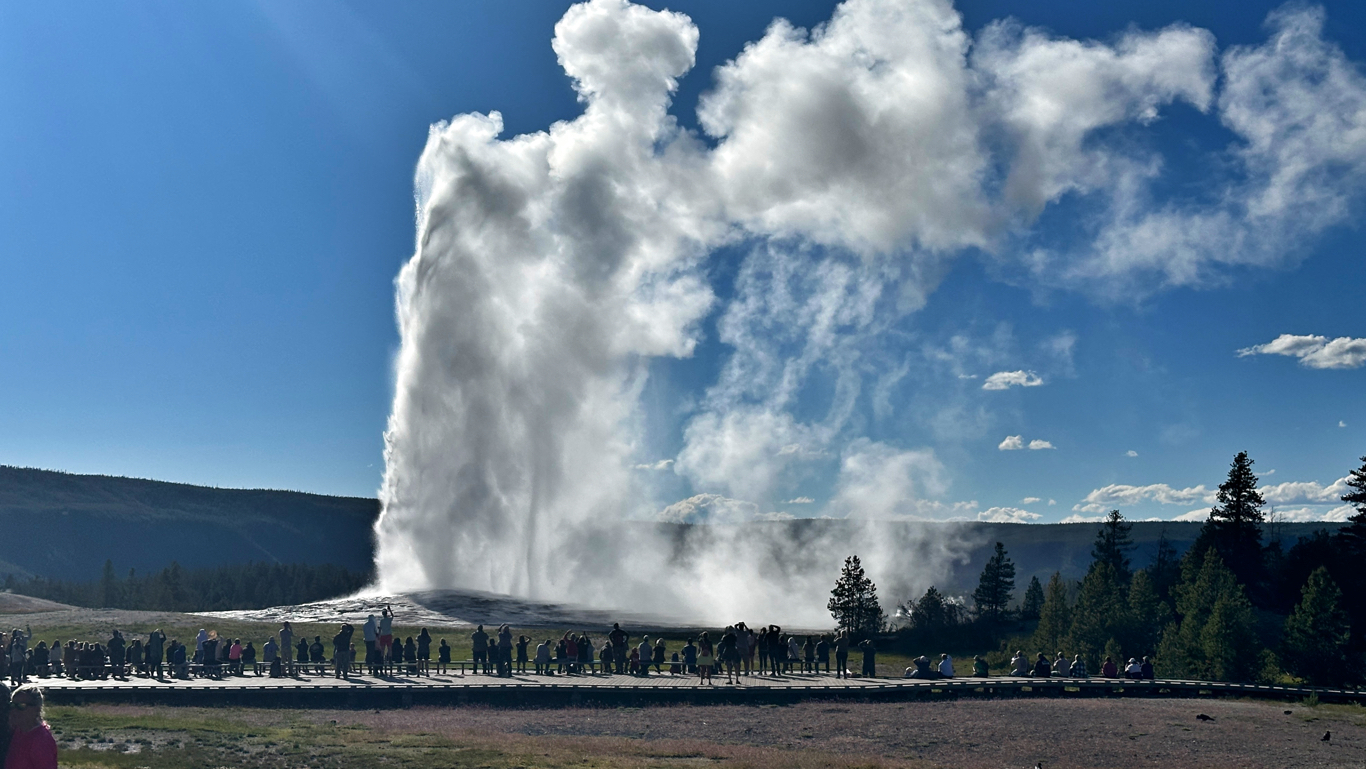“Rain, Writing, and Resources”
July 19, 2024 - Comments Off on Rain, Writing, and Resources
Our Thursday morning started early but thankfully dry! We packed up camp and then had breakfast. We then headed down the Blue Ridge Parkway through the fog. We stopped at an overlook and took in some great morning mountain views. We also made a quick stop at the Blue Ridge Parkway Visitor Center. While there, we observed several species of flowers, including Ironweed, Common Milkweed, and Blazing Star. We then continued our drive to the North Carolina Arboretum. Thankfully, the sun came out and we were able to lay out all of our very wet tents and gear in the sun to dry.
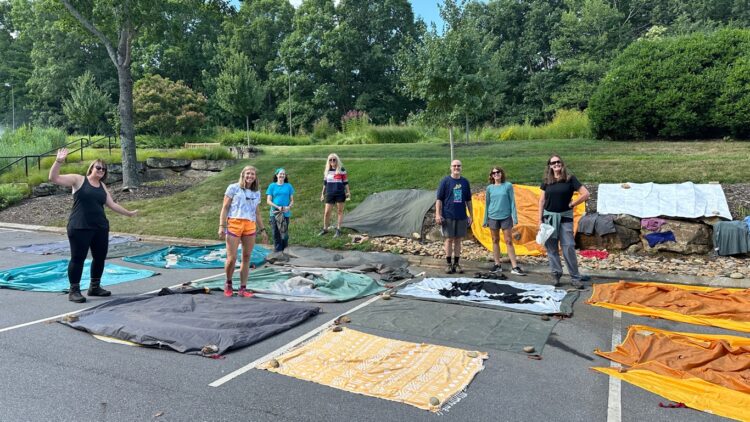
At the NC Arboretum, we first met with Shannon Bodeau, the Project Explore Coordinator. He talked about and explained the Project Explore program. Project Explore coordinates with teachers in getting their students outside and doing hands-on data collection and reporting. Shannon led us in some science activities that we can take back to use with our students. We examined leaves and sharpened our observation skills. We also took some quiet time to use our senses of sight and hearing to observe birds. Lastly, we practiced our math skills by measuring the diameter of trees and then used the information to calculate the age, growth rate, and amount of carbon sequestered by the tree. Shannon also shared many valuable resources from the NC Arboretum and Project Explore.
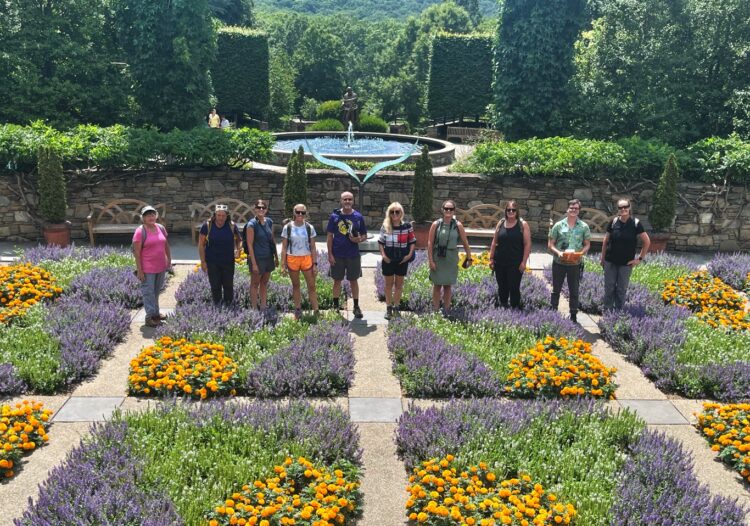
During a delicious lunch from Bent Creek Bistro, we met with Jonathan Bennett, Park Ranger with the Blue Ridge Parkway. Part of his role is organizing the Bear Volunteer Patrol which recruits community members to promote bear safety practices. He explained some of the issues that have arisen lately with bears becoming too comfortable around people. The Bear Volunteer Patrol helps educate the public about how to keep both humans and bears safe.
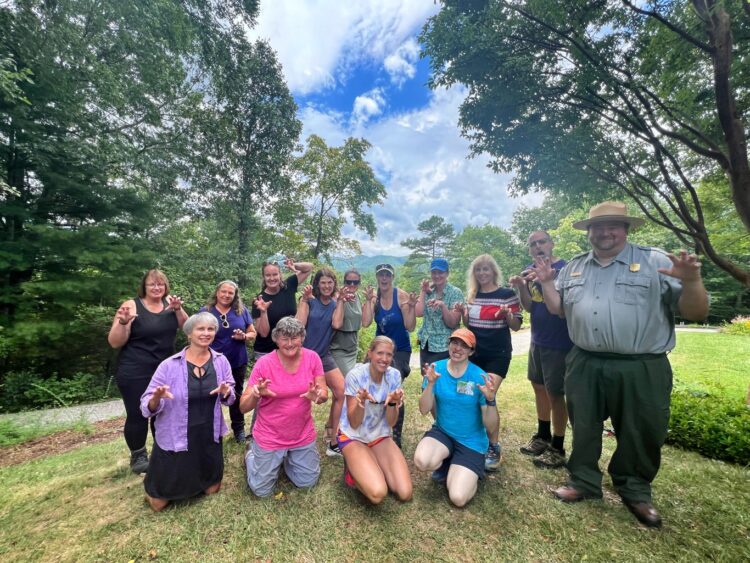
After lunch we met with Jennifer McGaha, professor at UNC Asheville. She is also the author of several books including “Flat Broke with Two Goats”, “Bushwhacking”, and a new book “The Joy Document,” which will come out this fall. She led us in a mini-writers workshop. We looked at examples of creative non-fiction and then, with the help of writing prompts, composed our own flash non-fiction pieces focusing on a memorable nature experience.

Then we travelled to Mount Pisgah Campground and made a mad dash to set up the tents before the torrential rain came. We ate dinner from Pisgah Inn while being serenaded by the sounds of wind and rain which cancelled our evening hike. However, we took the opportunity to get creative and do a print making craft instead. An early bedtime was planned in anticipation of an early morning sunrise hike.

